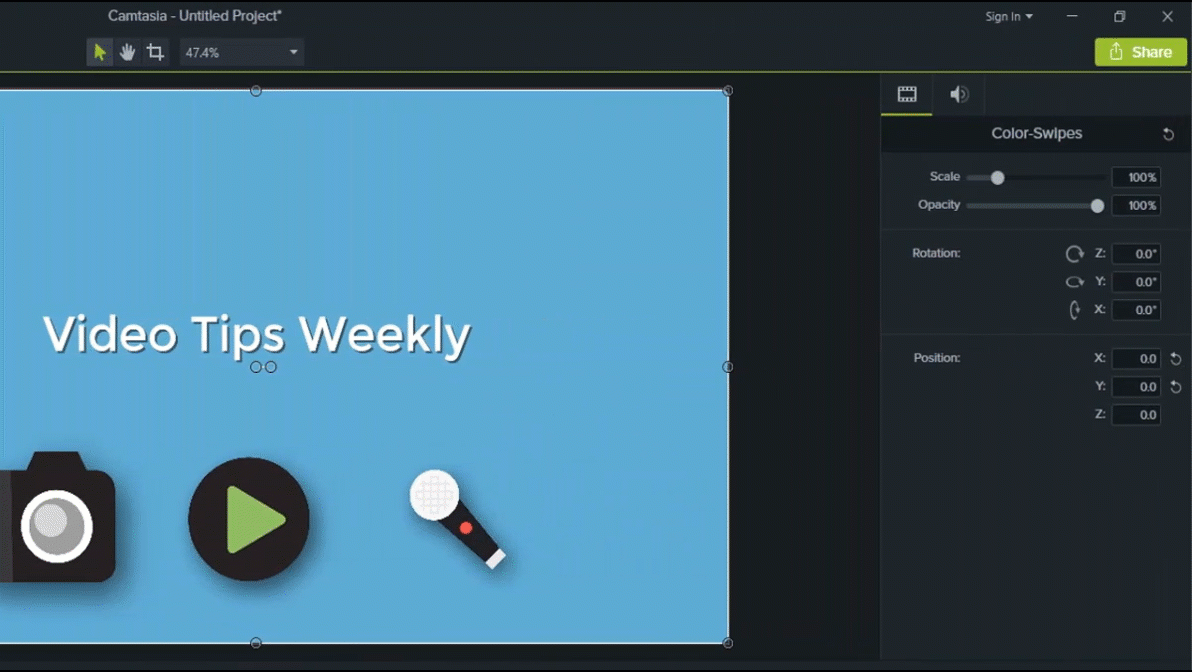Writing a blog post is often time-consuming and a lot of effort goes into research, writing, and editing. Since you’re already writing the post –why not also make a blog video? It can help you more easily capture your potential readers’ attention, and provide you with an additional piece of content for just a bit more effort.
You may be have heard the term vlog before. A vlog is a blog that is primarily delivered in video format. For our purposes, when we say blog video, we’re talking about a video summary of a blog post.
Repurposing your post into a blog video can do three things for you:
A blog video can be embedded within the text, and provide readers with an alternative way to consume your content. They can read, watch, or both.
It can be used as it’s own, re-imagined, standalone piece of content. No need to reinvent the wheel!
You can use your blog video on social media to promote the post and drive traffic to the blog post.
Creating an alternative version of something that already exists is a great way to save time, and ensures you’re maximizing the mileage you get out of your content. Ana Hoffman of Traffic Generation Cafe has some great information on the topic of content repurposing–she describes it as getting the most bang for your content buck.
If you’d like to create your own blog video, we’ve provided instructions below, to walk you through the process. Let’s dive in!
Step 1: Write a simple script
Boil down the article to it’s essentials. Perhaps creating a script seems like overkill for a short video project, but trust me–it’s not. Putting in the time to plan in advance will save you time later. Try to focus on a few key points. Perhaps you started with an outline before you started writing. If so, great! Use that. If you don’t already have an outline, try to work backwards, looking over any headings and titles to transform the post back into something very similar to an outline.
Step 2: Create a storyboard
In addition to a script, a storyboard is another important piece of prep work that will help save you time later, as you’re assembling and editing your blog video. I like to think of a storyboard sort of like a cartoon from the Sunday paper–it’s basically a visual plan of what you want to include in your video–sort of a visual version of a script.

Step 3: Gather (or film) your video assets
Once you have a plan in place, you’ll want to gather your video assets before you begin assembling your blog video. The video assets might include footage that you’ve captured with a camera, stock footage, screen-recording, or b-roll.
Step 4: Select your audio
For audio, you can use music, voice narration, or a combination of the two. A good rule of thumb is to think about where you plan to share your blog video, or how exactly you plan to use it. This consideration often helps guide you. For the blog videos we create, we use background music exclusively. We skip voice narration, because the primary function for our blog videos is for social media promotion. We want the video to make sense with or without sound, since most people watch videos on social media with the sound turned off. We still use a script, though, to determine the the text we’d like to use in the blog video to guide our viewers through the story.
Most video editing programs, like Camtasia, have music tracks available for you to use within the software. You can also visit sites such as Premium Beat to purchase a song to use. If you are using voice narration for your video, be sure to use a decent microphone to capture your audio.

Step 5: Assemble your blog video
If you’ve done your homework properly, i.e. followed steps 1-4, this part should be straightforward. With Camtasia (which is our favorite video editing program), you can import all of your video assets and audio. Then, drag-and-drop all of your assets onto the timeline in the order you’d like them to appear in the video. You can even add neat animations and effects, and tweak everything to your liking. For in-depth video editing assistance, check out the Camtasia tutorials.

Step 6: Produce and share
The final step in the blog video creation process is to produce your video. Producing it means you are converting it from an editable project file format, to something universally accepted by standard video players. Our workflow typically includes saving as an MP4, which is the most common video file format, but also uploading to a hosting site. A hosting site such as Vimeo, YouTube, or Screencast.com is a good option, as video files can be difficult to send via email due to a large file size.
Then, schedule a video post on all of your company social media platforms! We like to upload our blog videos to YouTube, grab the embed code, and then embed the video in the actual blog post as well. Don’t be shy when it comes to sharing!
Are you creating blog videos to help with promotion? We’d love to hear about your experience, or any questions or thoughts you have. Send us a message, tweet, or comment on Twitter or Facebook!



Share